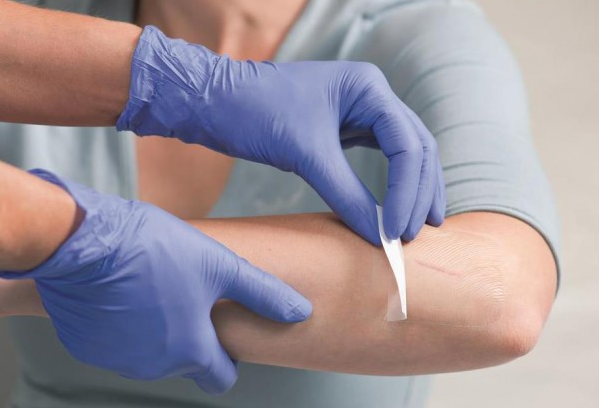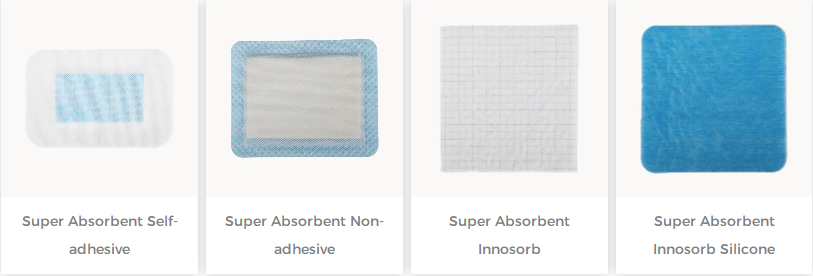As we age, our skin becomes drier , and if we stretch our skin under pressure at this time , it can cause skin tearing injuries. The highest risk of skin tearing is in the elderly, critically ill and very young patients because their skin is fragile and more prone to injury. This article will tell you how to treat and prevent it, please come and see it with me.
What kind of people are prone to skin tearing ?
The common people who are prone to skin tearing are generally the elderly and children. Their skin is very delicate and vulnerable to some external mechanical damage. In particular, many elderly people are prone to falls, which may lead to traumatic skin tearing. For children, their skin is not yet fully developed, the stratum corneum is lacking, and the bonding force of the dermis is insufficient , which can easily cause damage.
What causes skin tearing injuries?
Skin tear injuries are generally acute traumatic wounds caused by some mechanical force (eg, shearing or friction) or some type of trauma (eg, falls, dressings). In clinical practice, skin tearing injury caused by medical adhesive is more common. The direct cause of skin and epidermis injury is repeated sticking and tearing of medical adhesive products. When the adhesive force between the adhesive and the skin is greater than that of the epidermis The epidermis will be separated from the dermis with the tearing off of the medical adhesive. There may be no obvious trauma in the early stage, but the damage to the skin will accumulate with the repeated application of medical adhesive products, and eventually form MARSI. In addition, irritating adhesives and bacterial invasion in direct contact with the skin are also important causes of secondary skin damage.
How to choose adhesive dressing products?
There are many types of medical adhesive products on the market, and unreasonable selection will lead to an increased risk of MARSI in patients. How to correctly select and apply medical adhesive products is the primary consideration for the prevention of MARSI.
①Ordinary wound fixation : Commonly fixed wounds are the most common, such as blood vessel puncture sites, etc. The application needs to meet the requirements of isolation of bacteria, good air permeability and transparency, etc.which is convenient to prevent infection and observe the wound surface. The replacement cycle of the application is relatively short. The adhesive strength and elasticity requirements are not high. Consider choosing a polyurethane transparent plastic backing and a silicone adhesive type for application, which is convenient for replacement and ensures good comfort.
②Wound compression fixation : For wounds that need compression dressing, especially in places with high mobility such as joints, on the basis of ensuring isolation of bacteria and good air permeability, the product also needs to have a certain degree of elasticity and ductility. The lining material requirements are high, refer to the selection of non-woven backing dressings. It is worth noting that when the joints or other active areas of orthopedic surgery patients are covered with medical adhesive, the possibility of tension injury may increase. In order to avoid stretching injury, the stretching direction of the adhesive adhesive should be consistent with the skin movement direction. In addition, the hydrocolloid adhesive has good adhesion and can also be used for wounds that need to be sealed and reinforced.
③Wet wound surface : Silicone adhesive is more resistant to moisture, and can be considered for some medical fixation (such as endotracheal tube) in contact with moisture or secretions. However, it should be noted that if used or removed improperly, the adhesive will be highly corrosive to the skin, and natural rubber may also cause allergic reactions.
④Sensitive skin : Silicone adhesives are relatively mild, among which silicone adhesives are extremely hypoallergenic due to their physical properties. Compared with traditional adhesives, they have lower surface tension, can fit the natural contour of the skin, and are easy to use. Peel, suitable for patients prone to allergies or with fragile skin barriers; but at the same time it has low tolerance to wet conditions and poor adhesion, and is not suitable for certain critical devices such as vascular access devices, endotracheal tubes, and nasogastric tubes etc. fixed.
⑤ Edema skin : Before using medical adhesives, the potential risk of skin edema caused by adhesives should be considered. In addition to inflammation, injury or surgery, edema may occur in various medical environments, such as allergic reactions, liver cirrhosis, and congestive heart failure. Patients with high risk of edema, such as failure, DVT, hypoalbuminemia, chronic kidney disease, burns, sepsis, and fluid overload, should try to use a backing with a certain elasticity to avoid pressure skin damage caused by medical adhesive.
How to prevent?
①Choose an adhesive dressing containing silicone, which is gentler and easy to peel off compared to traditional adhesives.
②When peeling off, the glue can be removed flatly, keeping the glue always parallel and close to the skin . When the glue is completely removed, the fingers of the other hand continue to move to support the newly exposed skin. The borderless transparent film applicator is removed in the same way as above, by loosening one corner of the applicator and pulling it horizontally in the opposite direction of the wound, repeating the tension-free removal technique around the applicator, and tearing off gently and slowly at a parallel angle. For tape removal, it is recommended to release the tape slowly from both ends towards the wound, and when both sides are completely loosened, lift the tape from the center of the wound.
How to treat?
There was no local bleeding in the wound, and the wound was cleaned with normal saline first. If the flap can cover all or part of the wound bed. The flap or wound can then be covered with a non-adherent dressing. If the flap is not feasible, it needs to be removed with care.
The following types of dressings can be used for skin tears:
Non-adherent dressings provide a moist healing environment while allowing atraumatic removal.
Nonadherent foam dressings can be used for skin tears with high exudate .
Hydrogels can provide a moist healing environment but require non-adherent secondary dressings.
For more information on Innomed® dressings, refer to the previous articles. If you have customized needs, you are welcome to contact us; we will serve you wholeheartedly.
At Longterm Medical, we transform this data by innovating and developing products that make life easier for those who need loving care.
Editor: kiki Jia
Date: November 3, 2022

 English
English عربى
عربى Español
Español русский
русский 中文简体
中文简体








